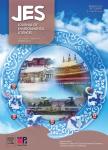Photocatalytic degradation of the dye sulforhodamine-B: A comparative study of different light sources
Photocatalytic degradation of the dye sulforhodamine-B: A comparative study of different light sources作者机构:Center for Ecologic and Environmental Science Three Gorges University Yichang 443000 China Department of Chemistry and Environment Sciences Ferrum College VA 24088 USA
出 版 物:《Journal of Environmental Sciences》 (环境科学学报(英文版))
年 卷 期:2007年第19卷第1期
页 面:97-102页
核心收录:
学科分类:083002[工学-环境工程] 0830[工学-环境科学与工程(可授工学、理学、农学学位)] 08[工学]
基 金:Project supported by the National Natural Science Foundation of China (No. 20373074) the National Basic Research Programme (973) of China (No. 2003CB415006-3)
主 题:TiO2 photocatalytic degradation sulforhodamine-B (SRB)
摘 要:The photocatalytic degradation of dye pollutant sulforhodamine-B (SRB) in aqueous titanium dioxide (TiO2) dispersions was examined under three lighting regimes: UV light (330 nm〈λ〈 380 nm), sunlight, and visible light (λ〉450 nm), all investigated at pH=2.5. Total organic carbon (TOC) and chemical oxygen demand (CODer) assays show that the degradation rate of SRB is much higher when irradiated with UV and sunlight compared with visible light. The temporal concentration changes of SRB illustrated a first-order reaction and the rate constant, k, is 0.197 min^-1, 0.152 min^-1, 0.027 min^-1, respectively, under the three lighting conditions. The final mineralized products were amine compounds identified by infrared spectrophotometry. When irradiated with visible light, the photocatalytic degradation rate could be improved by lowering the H2O2 concentration and inhibited by increasing the H2O2 concentration, but results contrary to the above were obtained when UV light was used for irradiation.



